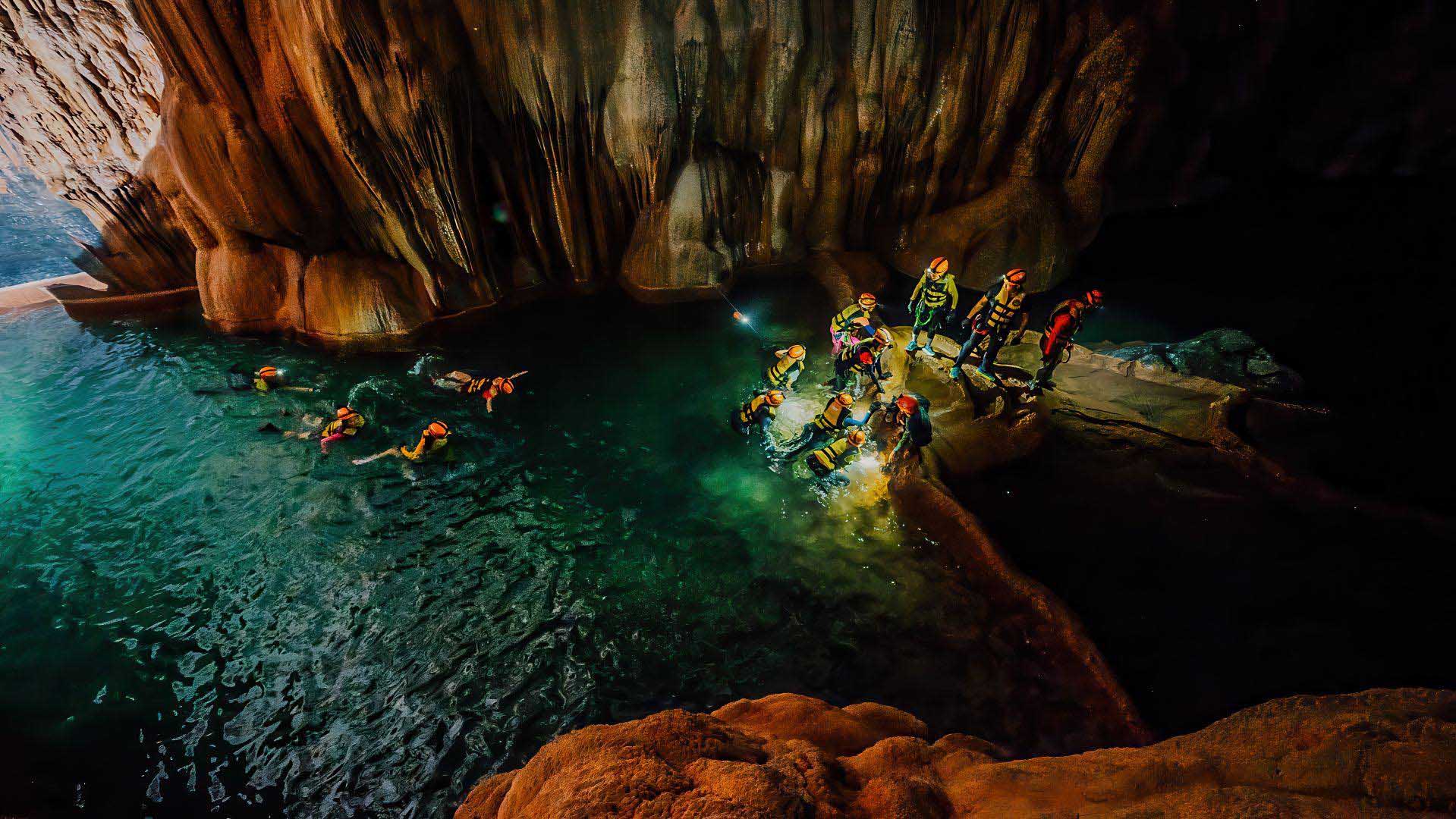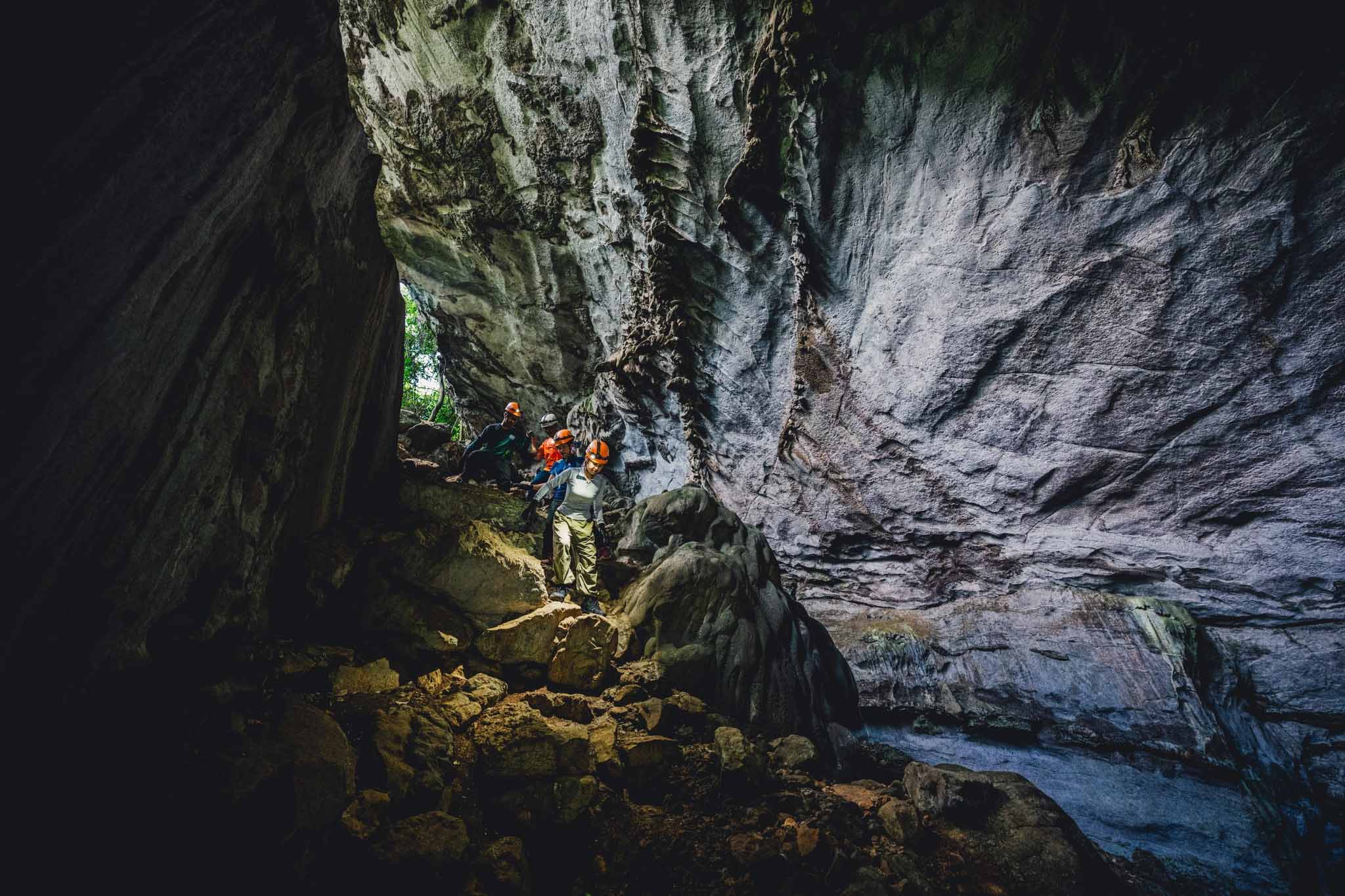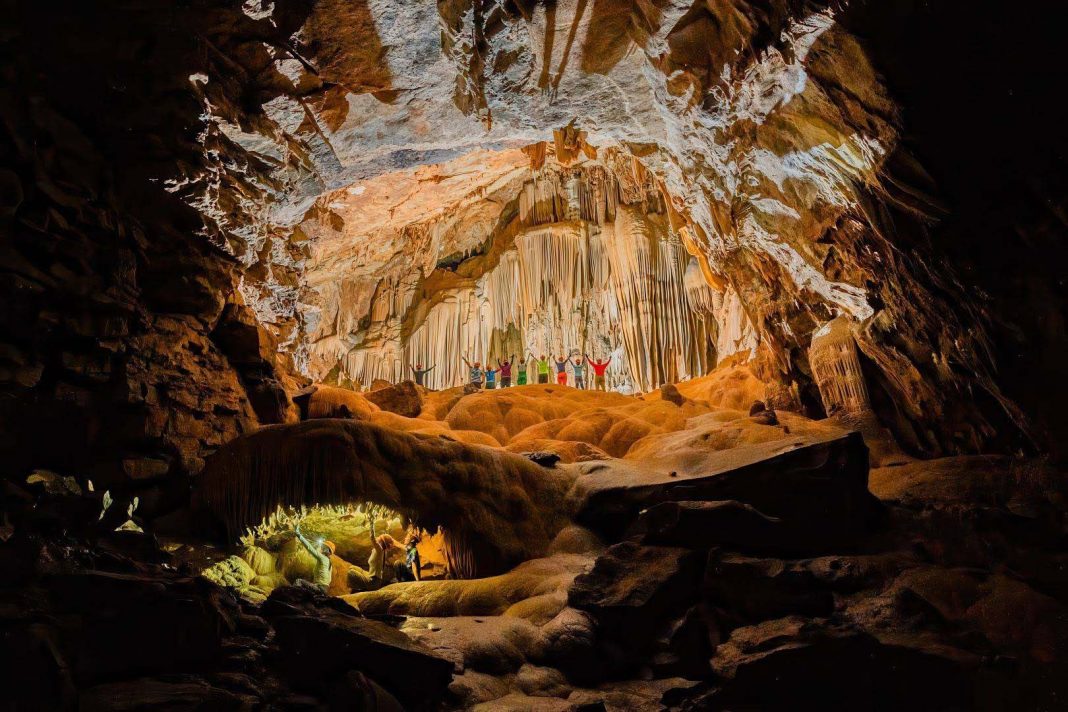Hung Thoong Cave is part of the Phong Nha-Ke Bang National Park in Quang Tri Province that has been expanded by combining Quang Tri and Quang Binh provinces. Renowned for its pristine beauty and vast cave system, Hung Thoong is emerging as a new destination for adventure tourism.
Travelers must trek through primary forest, climb rocky terrain, swim through underground rivers, and navigate dry caves before reaching the site. Campsites are often set up in secluded valleys along the route.
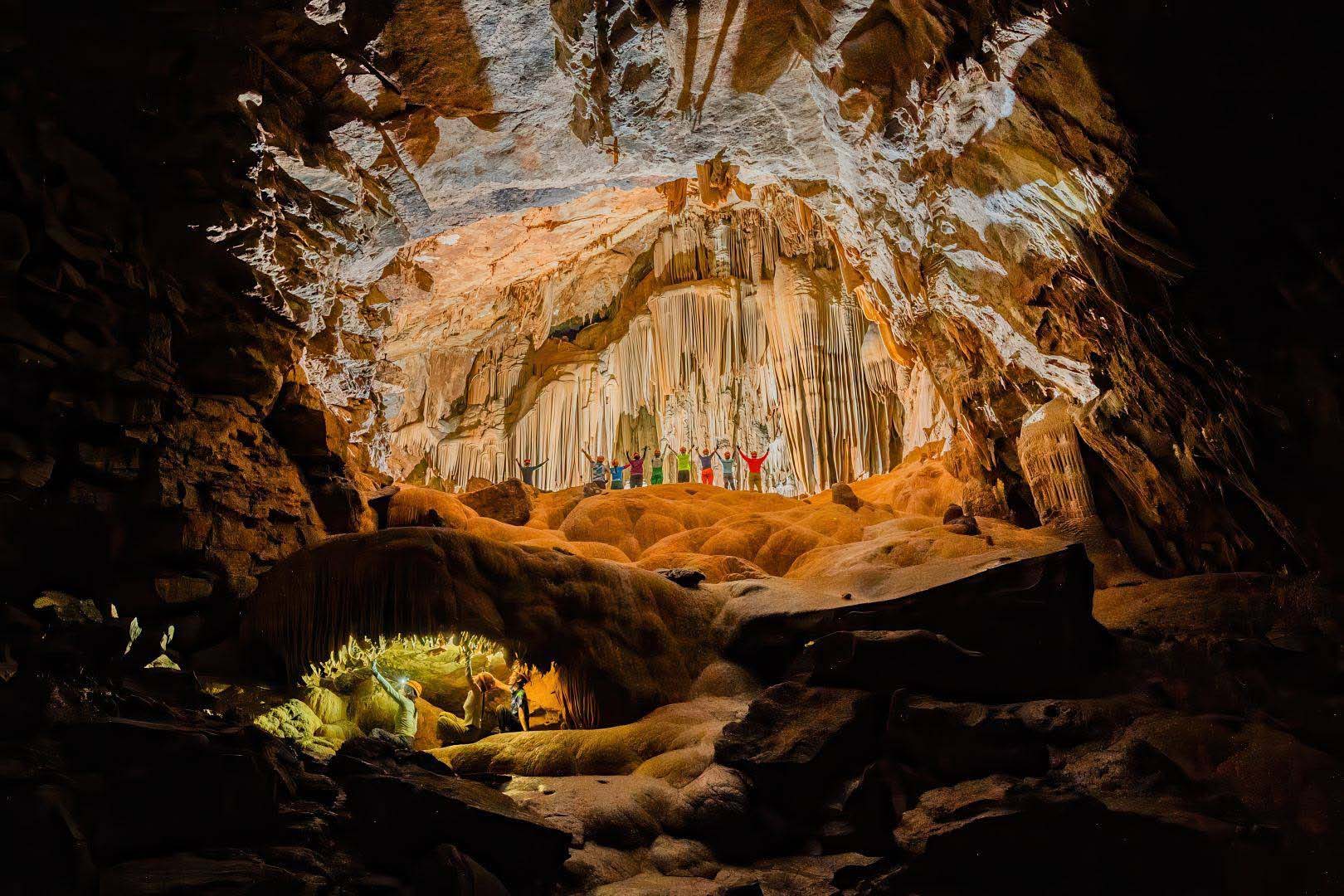
The surrounding area is marked by steep cliffs, thick vegetation, and small valleys. Some trails require scrambling over vertical rock faces or crossing dense jungle. Several clear streams intersect the path, requiring visitors to wade or swim through deeper sections.
Inside Hung Thoong, millions of years of geological activity have created an intricate system of stalactites and stalagmites. These formations remain largely untouched, offering a wide variety of shapes and colors that reflect off headlamps in the dark, creating a surreal and ever-changing landscape.
Van Ngo, a photographer from HCMC, recently completed a three-day, two-night expedition through the cave system. He described the journey as both physically demanding and rewarding, highlighting experiences such as trekking through mud, scaling sharp limestone rocks, and swimming in underground lakes.
The cave also features hidden underground lakes that explorers often swim or walk through as part of the journey.
“The Hung Thoong trekking route is manageable for most active travelers,” Ngo noted. “What impressed me the most were the cool, crystal-clear pools inside the cave. Looking up from the sinkhole, you can see massive stalactites shaped by time.”
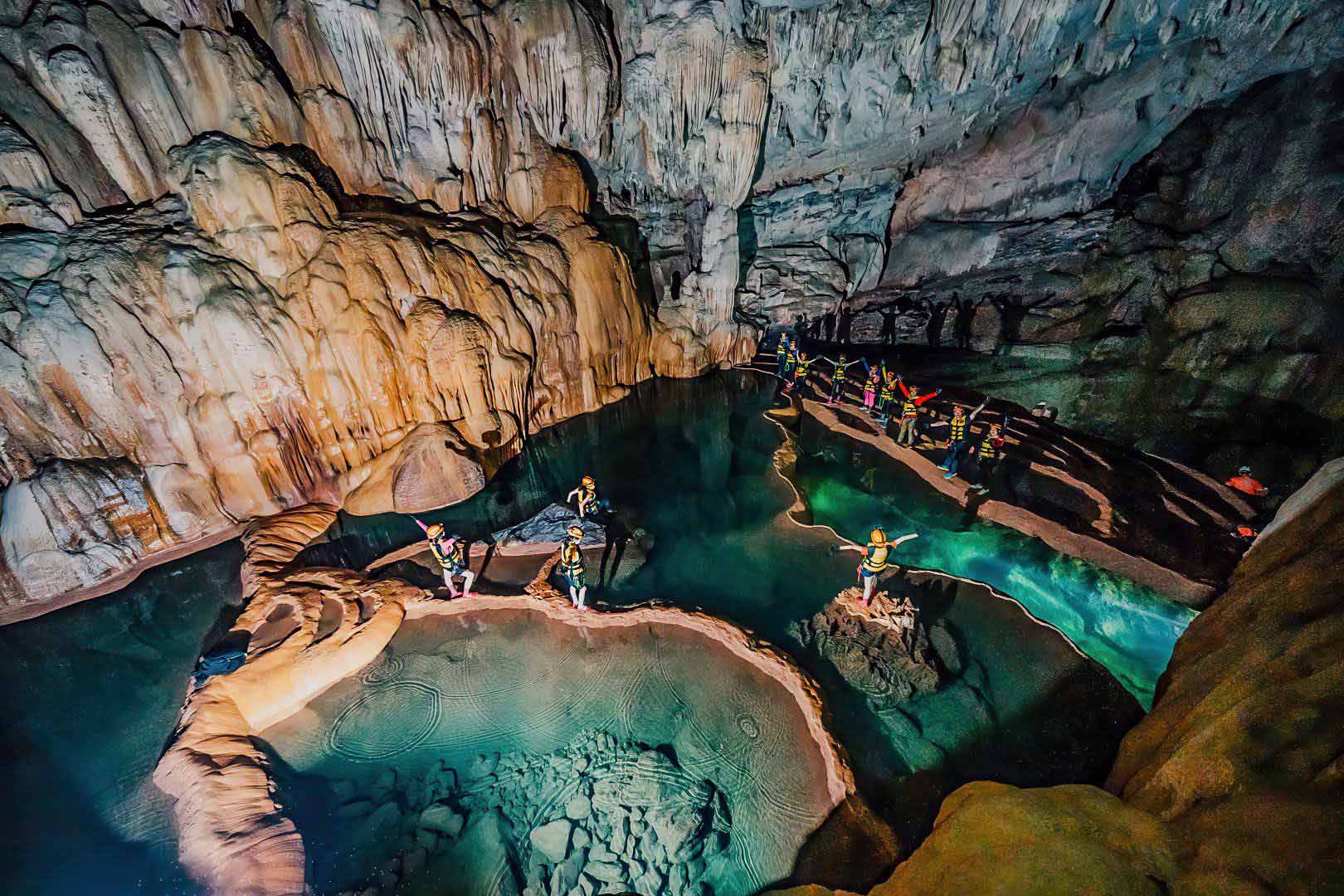
In addition to cave exploration, visitors can participate in ziplining, abseiling, and stream bathing. Ngo emphasized the unique value of the trip, describing it as a way to disconnect from modern life and reconnect with nature.
Due to difficult terrain and potential hazards such as narrow passages and slippery rocks, visitors are required to wear safety gear, including life vests and helmets. All tours must be guided by trained professionals to ensure safety throughout the expedition.
